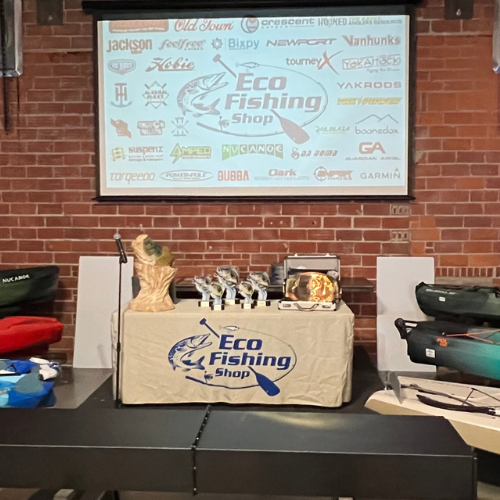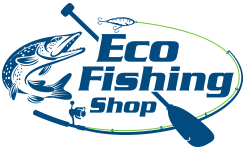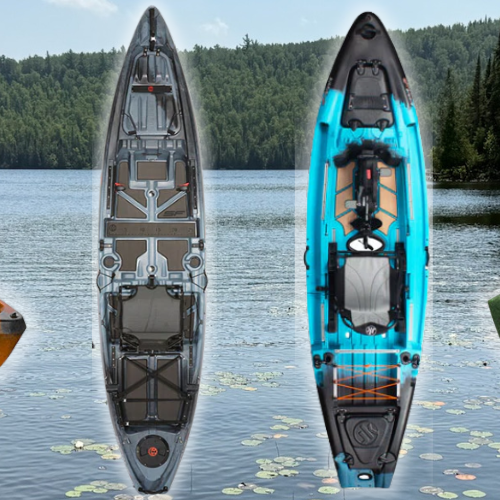Adapting Your Fishing Techniques as the Season Changes
In our last blog, we talked about Fishing in the Heat of Summer and how that affects fish behavior. We talked through how the ecosystem is affected, what that does to the fish and how you should adjust. One major thing you may have to explore is finding new fishing spots altogether.
That leads to questions that are not always easy to find answers to. Where do you go when your favorite fishing spots "dry up"? Where do you find resources to help map out new fishing locations? How can you make sure the new spots are worth the time spent loading your kayaks up and driving to locations you are unfamiliar with? These are all questions we all face. And with above-average temperatures this summer for most of the United States and many states experiencing varying degrees of drought, changing your habits has been crucial in finding fish.
Where Do You Turn When You Need New Fishing Spots
Search Engines
The first place most of us will turn to is looking up new lakes, rivers, or streams that are near us with an online browser. A great place to start is your state's map. Often times, your state's DNR website is a great resource for finding interactive river and lake maps. It is a great place to find potential new locations that are near you.
Online Communities
Once you find a new body of water you may want to try, you can search for other anglers talking about the body of water you plan to try. More often than not, any online discussions you find can inform you on whether or not the new fishing spot is worth the time. Fishing forums, like the Kayak Anglers Resource are places where anglers can ask questions and talk about fishing spots. They are also great places to share tips and strategies for new places.
Social Media Groups
Beyond online forums and communities, many local fisheries have things like Facebook groups. Joining these groups can often lead to good sharing of local conditions, hot spots or even the struggles that other anglers are experiencing.
Scouting the Water Ahead of Time Using Apps
If you don't have a fish finder with pre-loaded maps, there are apps you can download on your mobile device to pre-scout your new fishing spots. If your fish finder does not have lake or river maps, you can download an app like Navionics. This allows you to look at the water you'll be fishing on ahead of time to find the depth, structure changes, and boat launches. You can map out your float and fishing plan before you lave your house.
Try and Fail
No matter how much planning you do, you still need to prepare for failure. Trial and error is part of finding and eliminating fishing spots and places that are not worth the time. Set expectations for your outings and be willing to fall short of those expectations.
Enjoy the Wins & Laugh at the Lows
Whether you are going out for a casual paddle, a fishing trip, or a pleasure float down a river, kayaking takes preparation and planning. It is easy to get too caught up in successes or failures on each trip. When you get too focused on how many fish you are catching or something that isn't going as planned, you miss the small things that make kayaking special.
Even though your trips on the water don't always go as planned, there are smaller things to enjoy. Sunrises and sunsets, wildlife, and areas of nature that are not often visited are just a few things that are easy to overlook when you get frustrated with lack of success on the water.
It may be difficult in the moment, but more often than not, all you can do is laugh at a bad day on the water. Learn from your mistakes, laugh at your failures, and create better plans with the knowledge you gained.
Ask Questions, Share Strategies & Keep Trying
Whether you are new to kayak fishing or a seasoned pro, the transition of fishing seasons can be surprisingly difficult. The biggest mistake most anglers make is not adapting. New lures, different techniques, new fishing spots and a willingness to fail can play a huge role in seasonal success.
Kayak fishing can take you to all sorts of new spots that many boats can't reach. This is an asset when fish move to new areas throughout the season that are only accessible by fishing kayaks. But, with that transition, your fishing strategies need to adapt as well.
One of the biggest mistakes anglers can make is being stubborn. Ask for help on sites like our public fishing forum, the Kayak Anglers Resource. Sharing knowledge (like in the discussion, Fall Fishing Tips) is how we grow our sport. If you find something that works for your area, share it. If you have questions about specific areas or fish species, ask those questions! There is a learning curve to every season of fishing, but you don't have to learn alone.






